Rice, with its countless varieties, occupies a cherished spot in the hearts and taste buds of individuals around the globe. From the fragrant Basmati of India to the short-grain Arborio of Italy, each type of rice brings its unique texture, flavor, and cultural significance to the table. Among these diverse grains, sticky rice stands out as a staple cherished in many Asian cuisines, known for its glutinous texture and versatility in both savory and sweet dishes.
If you love to eat sticky rice, you must learn how to make it home. While making the perfect sticky rice might seem like a daunting task reserved for skilled chefs and grandmothers with generations of experience, with the proper guidance and a dash of patience, anyone can master crafting this versatile and delicious staple. In this beginner guide, I will walk you through the process step by step on how to make sticky rice.
What Is Sticky Rice?
Sticky rice, alternatively called glutinous rice, transforms into a remarkably adhesive delight upon cooking! It is used as a base for savory dishes and vegetable stir-fries, in sticky rice dumplings, or as a dessert when fruit and sweetened coconut milk are added. You'll often find sticky rice featured in Thai recipes, such as mango sticky rice.
But what makes sticky rice sticky? Starch! All starchy foods contain amylose and amylopectin. However, the rice used to make sticky rice is almost entirely amylopectin. This starch is water-soluble and quickly breaks apart in hot water, resulting in the chewy texture of sticky rice!
What's The Difference Between Glutinous Rice And Regular Rice?
Glutinous rice has a higher amylopectin content than regular rice, making it sticky when cooked. Regular rice, on the other hand, has more amylose, resulting in a fluffier texture.
Best Rice Types To Use For Sticky Rice
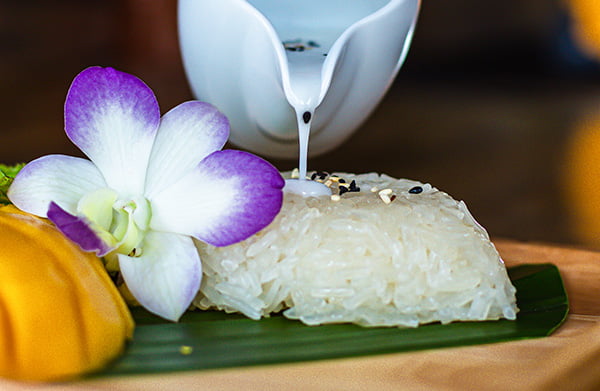
When it comes to making authentic sticky rice, choosing the right type of rice is crucial to achieving that signature chewy and sticky texture. The two main types of rice commonly used for sticky rice are glutinous rice (also known as sticky rice or sweet rice) and japonica rice (short-grain or sushi rice).
Glutinous Rice (Sticky Rice)
Glutinous rice is a common variety of Japanese sticky rice and is a classic choice for making sticky rice. Contrary to its name, glutinous rice is gluten-free; " glutinous " refers to its glue-like texture. This rice variant boasts elevated starch levels compared to standard rice types, leading to its characteristic stickiness upon cooking. It's commonly used in various Asian dishes, such as Thai sticky rice, Chinese zongzi (sticky rice dumplings), and Filipino suman.
Japonica Rice (Short-Grain Or Sushi Rice)
Japonica rice can also make sticky rice, especially short-grain or sushi rice. While it doesn't have the same level of stickiness as glutinous rice, it becomes somewhat sticky when cooked, making it a suitable substitute in dishes like sushi and Korean rice cakes (tteok).
Black Glutinous Rice
You might consider using black glutinous rice for a twist on traditional sticky rice. A rich purplish-black hue characterizes this rice variety and offers a subtly nutty flavor. It's often used in desserts, like Thai black sticky rice pudding.
When choosing the best type of rice for your sticky rice recipe, look for rice labeled as "sweet rice," "glutinous rice," or "long-grain sticky rice." They should be available in your grocery store, although you may have to look in the ethnic foods section rather than in the typical rice aisle.
What You Will Need To Make Sticky Rice
Sticky Rice (Glutinous Rice or Japonica Rice): Choose the type of rice based on your recipe and preference. Glutinous rice is the traditional choice for the stickiest results, but short-grain or sushi rice can also work.
Water: For rinsing, soaking, and cooking the rice.
Salt: A pinch of salt enhances the flavor of the rice.
How To Make Sticky Rice
Step 1: Wash The Sticky Rice
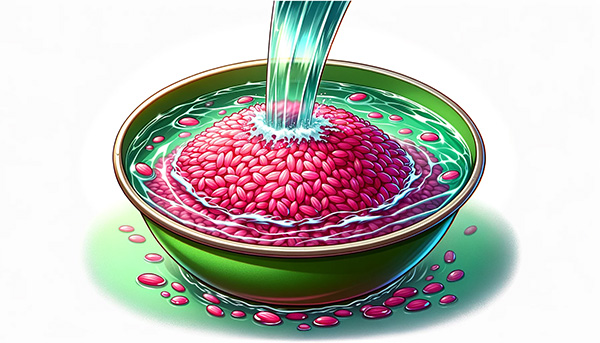
Determine the quantity of sticky rice you wish to prepare. Transfer the rice to a spacious bowl and submerge it in cold water. Gently agitate the rice with your hand to release excess starch. The water will become cloudy. Carefully pour out the cloudy water while holding the rice in the bowl. Continue this rinsing procedure until the water turns clearer, signifying the removal of a substantial portion of the starch.
Step 2: Soak The Sticky Rice
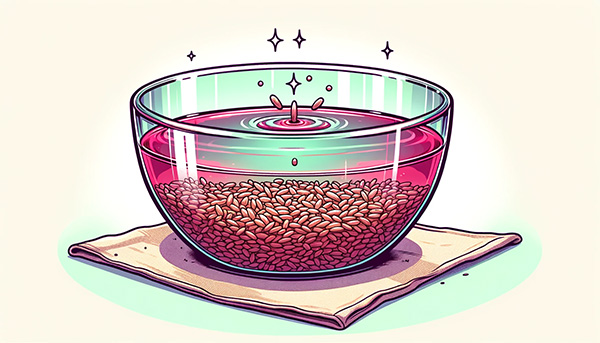
After the rice has been thoroughly rinsed, pour in sufficient water to submerge the rice by approximately an inch. Allow the rice to soak for a minimum of 4 to 6 hours, or ideally, leave it to soak overnight. This soaking process allows the rice grains to absorb water and become plump, contributing to the desired stickiness.
Step 3: Drain The Water
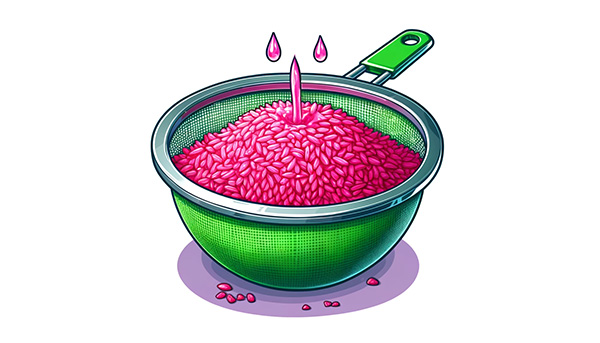
Once the soaking period is complete, drain the soaked rice using a fine-mesh strainer or colander. Allow it to drain for a few minutes to remove excess water.
Step 4: Cooking Sticky Rice
How To Make Sticky Rice On The Stove
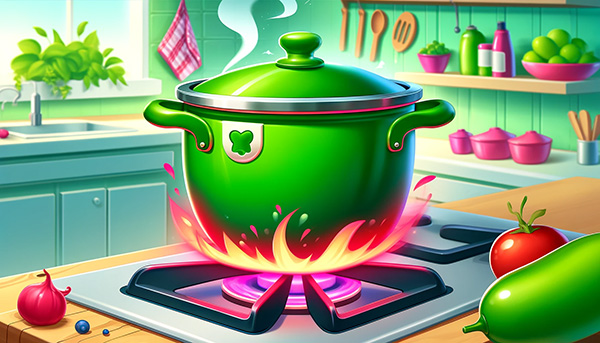
No special equipment is needed for this method—just a pot, water, rice, salt, and some patience. This is one of the best ways to prepare sticky rice.
- Measure two cups of rice and three and a half cups of water into a spacious pot. Allow the rice to soak for at least thirty minutes, or extend the soaking time to four hours. The longer you let the rice grains soak, the better your sticky rice will be.
- Incorporate half a teaspoon of salt into the rice and gently mix.
- Place the pot on the stovetop over high heat and bring the water up to a boil.
- Once the water reaches a boil, reduce the heat to medium-low and proceed to cover the pot. However, leave the lid slightly off-center so that extra steam can vent. You don't do this when cooking regular rice, so don't skip this step!
- After ten minutes, examine to ensure the sticky rice has absorbed all the water. You can do this by using a fork to pull the rice away from the center, creating a small hole. If you see water pooling at the bottom of the hole, cook the rice for at least five more minutes.
- Remove the pot completely from the heat source and securely place the lid on top. Let the soaked rice sit and steam for ten minutes, and then enjoy your sticky rice!
How To Make Sticky Rice In A Rice Cooker
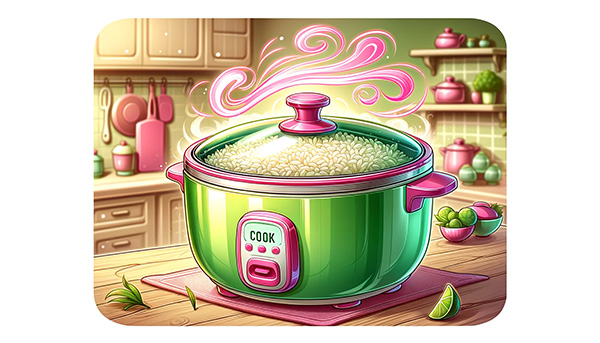
A primary advantage of using a rice cooker to cook sticky rice is that the device handles the timing aspect, freeing you from the need to manage it yourself!
- Measure two cups of rice and two and a half cups of water into the rice cooker. Allow the rice to soak in the pot for a minimum of thirty minutes or up to four hours. The longer you let the rice grains soak, the better your sticky rice will be.
- Incorporate half a teaspoon of salt and gently stir it into the mixture.
- Close the lid and activate the rice cooker. If your rice cooker boasts an automatic timer, your task is complete! Leave it be until it automatically switches off. Otherwise, set a timer for fifteen to twenty minutes.
- Let the soaked sticky rice sit and steam in the rice cooker for at least five minutes, and then serve it up!
How To Make Sticky Rice In A Steamer
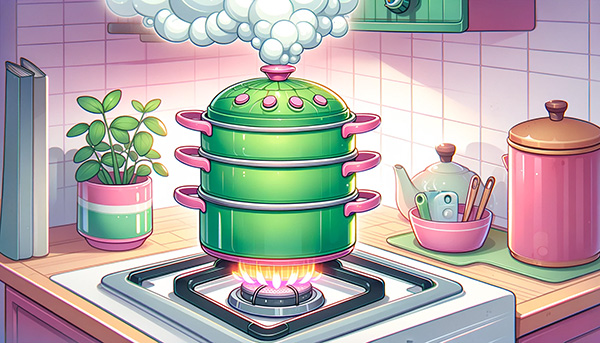
This method represents the most classic approach to crafting sticky rice. If done correctly, steamed sticky rice will give you the most authentic signature stickiness. You can steam sticky rice using a bamboo steamer, a wok, or a simple steamer basket inserted over a large saucepan.
- Pour three cups of rice into a large pot and cover it with lukewarm water until it rises at least two inches above the top layer of rice.
- Let the rice soak! This method has a much longer soak time. Allow at least six hours for soaking and up to a full twenty-four hours if possible. Remember - the longer you let the rice soak, the better your sticky rice!
- Drain the soaked rice and position it within a steamer basket.
- Position the steamer basket over a wok or large pot with two to three inches of water, allowing it to come to a boil. Ensure that the rice within the basket remains separate from the simmering water below.
- Cover the steam basket and let the rice steam for twenty minutes.
- Uncover the rice and stir it so the rice on the bottom is on the top, and vice versa.
- Reattach the lid and allow the rice to steam for an additional five minutes. Your culinary delight is now ready to be savored!
Step 5: Rest And Fluff
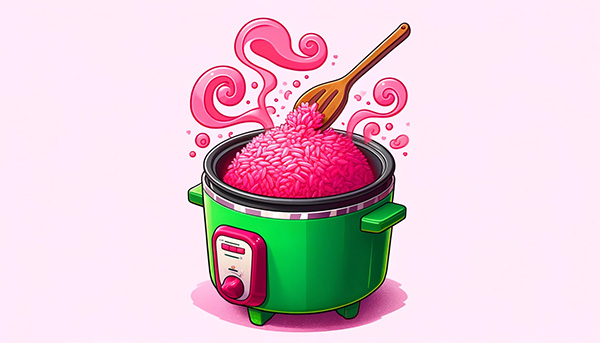
Upon completion of the cooking process, extract the cooked sticky rice from the heat source and allow it to rest briefly. This allows any remaining steam to distribute and further develop the stickiness evenly. Carefully loosen the sticky rice using a paddle or wooden spoon to separate the grains gently.
Troubleshooting Sticky Rice
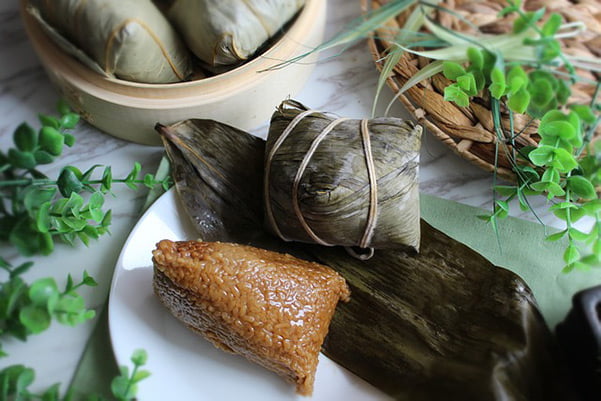
If you've cooked your rice and the texture is just not quite right, don't worry. There are ways to fix it! Each of these remedies is specific to your cooking method, but there are two things in common across the methods - never skip the long soak time at the beginning, and never add too much water!
Sticky Rice Is Too Dry And Hard
If your sticky rice seems too dry and hard, this may be a sign that your sticky rice is undercooked or not properly soaked.
To address this, introduce a small amount of water to the rice and continue steaming for a few additional minutes until the rice achieves the desired tenderness. If you didn't soak the rice properly, ensure that you soak it for a longer period (at least 4 hours or overnight) next time.
Sticky Rice Is Too Wet And Mushy
If your sticky rice is too wet and mushy and looks too moist, it may have been overcooked or has too much moisture.
To fix this problem, spread the rice on a tray or plate and let it air out for a while. Gently fluff the rice to release any excess moisture. Next time, reduce the steaming time slightly and make sure the rice is properly drained before cooking.
Rice Is Stuck Together In Clumps
If your sticky rice is stuck together and clumps, this is a sign of insufficient rinsing or improper steaming.
Before beginning the soaking process, rinse the rice meticulously to eliminate surplus starch. When steaming, spread the rice evenly in the steamer or steaming tray. If using a bamboo steamer, line it properly to prevent sticking.
Sticky Rice Is Undercooked
The rice may have needed to be cooked longer, or the steaming temperature needed to be higher.
To address this issue, steam the rice for a few more minutes until it reaches the desired level of tenderness. Check that your steamer or cooking method is producing enough steam and heat.
Sticky Rice Is Bland
The rice might lack flavor due to being soaked and cooked in plain water. For added flavor, you can soak and cook sticky rice with water and coconut milk. This step will impart a delicate coconut aroma to the rice. Additionally, you can sprinkle some toasted sesame seeds or drizzle a bit of soy sauce for an extra layer of taste.
If the sticky rice tastes too salty or has no flavor, the rice has absorbed too much or too little salt.
Adjust the amount of salt you add to the soaking water or during cooking based on your preference. Remember that sticky rice is often enjoyed with various dishes, so its flavor should complement the overall meal.
Sticky Rice Is Too Sticky Or Not Sticky Enough
Achieving the right stickiness can be a matter of preference and technique. Adjust the soaking time and steaming time to control the stickiness level. For stickier rice, you can soak it longer and steam it for a shorter time. Conversely, for less sticky rice, shorten the soaking time and steam it a bit longer.
Remember that practice leads to perfection, and it's natural to go through a few attempts before achieving your desired sticky rice outcome. Don't be discouraged by initial challenges; learning from your mistakes and adjusting your approach will lead you to master the art of making perfectly sticky rice.
